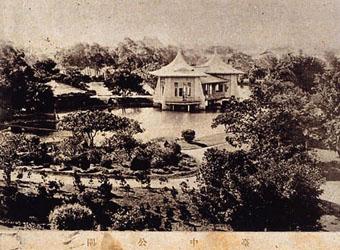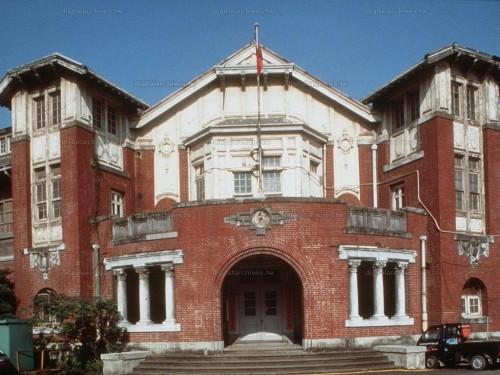TELDAP Collections
| The History of the North-South Railway |
|
1908 marked a significant year in Taiwan’s railway history. Before the Japanese Colonial Period began in 1895, railways in Taiwan were planned and constructed under the rule of Liu Mingchuan, the Governor of Taiwan during the late Qing Dynasty. Unfortunately, due to the strict financial situation during the pre-Japanese Colonial Period, only the Keelung-Taipei and Taipei-Hsinchu lines were completed. In the early Japanese Colonial Period, the first Governor-General, Kabayama Sukenori, asked the technician Koyama Hosei to examine the railway between Taipei and Keelung. Koyama Hosei found many places to be poorly preserved, with crooked railway ties or disconnected rails. According to historical materials, even Kabayama Sukenori himself was once caught in a train derailment. Though the establishment of the North-South Railway aroused a lot of discussion during the Japanese Colonial Period and was also regarded by the Governor-General’s Office as an important policy, it was not until 1899 that construction began at the north and south ends. The routes were designed by the head technician, Hasegawa Kinsuke, who made considerable modifications on the old Qing railway lines. In 1904, the southern section already extended from Takao (present-day Kaohsiung) to Changhua, and the northern section extended from Hsinchu to the Sancha River (present-day Sanyi, Miaoli County). The longest tunnel of the North-South Railway, “Tunnel No. 9”, was completed in March, 1908. Later, on April 20, the northern and southern sections were finally joined together in central Taiwan, and the whole railway came into operation. On October 24 of the same year, the Taiwan Governor-General’s Office held a ceremony in Taichung Park to celebrate the full opening of the North-South Railway, which was strongly suggestive of propaganda. But still, the North-South Railway indeed turned over a new leaf in Taiwan’s transportation.  A corner of Taichung Park, probably photographed in the Japanese Taisho Era. The Pond Pavilion (present-day Lake Heart Pavilion) in the picture was built for the opening ceremony of the North-South Railway.
(Image Source: Taiwan Memory Digital Museum)
One of the main forces behind the establishment of the North-South Railway was Hasegawa Kinsuke (1855-1921). He was appointed by Goto Shinpei, the chief civil administrator of the Taiwan Governor-General’s Office, to take the post of head technician in the “Provisional Taiwan Railway Construction Department” in 1899. He took charge of planning the North-South Railway, supervising various railway affairs, and stayed in Taiwan until the completion of the North-South Railway in 1908. During his tenure, he was known as the “thunder god” for showing no tenderness when reprimanding someone, as described in Taiwan Railway: “One day in a meeting, Hasegawa’s keen eyes fell upon the construction list for some rural railway station by chance, and he said, ‘What? Installing a toilet costs so much money? We don’t need such a thing! Remove it!’ An officer replied, ‘But it would be inconvenient without a toilet.’ Hasegawa said, ‘Then [they should] go outside the station [to take care of business]!’” This clearly shows Hasegawa Kinsuke’s toughness and principle of “quick extension”— he wanted to open the railway as soon as possible, and to save as much money as possible. Despite this tough attitude, Hasegawa Kinsuke achieved far more than expected. The North-South Railway originally had a budget of 28.8 million yen and was scheduled to be built over 10 years (1899-1909), but was completed about one year early, and more than 1.21 million yen under budget. In addition, Hasegawa Kinsuke also built the Tamsui and Fengshan lines, expanded the Kaohsiung and Keelung railway stations, and used the rest of the budget to dredge the Kaohsiung Harbor and build railway inns.
Originally the Railway Department of the Taiwan Governor-General’s Office, this building is now under repair (2006- ) and will be added into the system of Taiwan museums in the future.
(Image Source: A History of Taiwan Architecture)
References:
Zhang, S. Y. (ed.) (1999). History of Taichung City. Taichung City: Cultural Affairs Bureau.
Han, X. X., Xie, L. X. & Chen, Q. F. (2002). The Investigation and Restoration of the Lake Heart Pavilion in Taichung Park. Taichung City: Taichung City Government.
Watanabe, Y. (2006). Taiwan Railway. (D. F. Huang, Trans.). Nantou City: Taiwan Historica.
Cai, L. B., Chen, M. Y. (2008). Foreigner in Formosa: Parallel Line‧247 Miles - Hasegawa Kinsuke. Taipei City: Dacombook Publisher.
Related Collection:
 The Old Mountain Line of the North-South Railway – Tai’an Station
19/260
|













